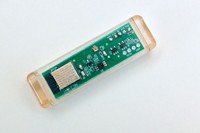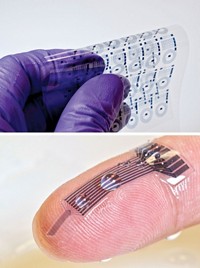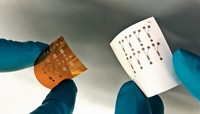Advertisement
Grab your lab coat. Let's get started
Welcome!
Welcome!
Create an account below to get 6 C&EN articles per month, receive newsletters and more - all free.
It seems this is your first time logging in online. Please enter the following information to continue.
As an ACS member you automatically get access to this site. All we need is few more details to create your reading experience.
Not you? Sign in with a different account.
Not you? Sign in with a different account.
ERROR 1
ERROR 1
ERROR 2
ERROR 2
ERROR 2
ERROR 2
ERROR 2
Password and Confirm password must match.
If you have an ACS member number, please enter it here so we can link this account to your membership. (optional)
ERROR 2
ACS values your privacy. By submitting your information, you are gaining access to C&EN and subscribing to our weekly newsletter. We use the information you provide to make your reading experience better, and we will never sell your data to third party members.
3-D Printing
Consumer 3-D Printer Fabricates Microfluidic Chips
Microfluidics: With the right resin, the machine builds transparent devices with sub-millimeter-wide channels
by Puneet Kollipara
February 18, 2014

To design microfluidic chips quickly and at low cost, one group of chemists has turned to a consumer 3-D printer. The researchers report that with this machine and the right resin, they can fabricate prototype chips with better features—namely, increased transparency and smaller channel sizes—than they can make with other 3-D printing techniques (Anal Chem. 2014, DOI: 10.1021/ac4041857).

Typically, researchers build microfluidic chips with techniques such as lithography, which requires a costly and time-consuming process to make 2-D photomasks that contain the chip’s design. Some groups have tried using certain types of 3-D printers to get around that process. These printers operate by squeezing hot liquid plastic through a nozzle and letting it harden in the desired patterns. Unfortunately, those printers can’t produce channels smaller than a millimeter in width and aren’t compatible with the materials needed to make transparent microfluidic chips.
Michael C. Breadmore and his colleagues at the University of Tasmania, in Australia, found that a consumer-level MiiCraft 3-D printer could produce prototype chips without these limitations. This printer builds chips one slice at a time by shining a 2-D pattern of light corresponding to a cross-section of the design onto a pool of a liquid resin. The light polymerizes the resin into a solid, and a metal stage pulls up the solid chunk so the printer can form the next cross-section.
By using a clear, acrylate-based liquid resin with the printer, the researchers showed that in tens of minutes they could produce transparent chips with channels as small as 250 µm in width. The machine costs $2,300, a cost within the reach of many labs.
As a proof of concept, the researchers printed a 41-mm-wide, 117-mm-long device that could continuously monitor nitrate levels in tap water. The chips were transparent, so the researchers could use a standard colorimetric nitrate assay. The device’s measurements matched those of other standard methods.
Breadmore and his team think that the printing method, while needing further optimizations, holds promise for designing microfluidic chips for applications such as environmental monitoring or point-of-care diagnostics.





Join the conversation
Contact the reporter
Submit a Letter to the Editor for publication
Engage with us on Twitter